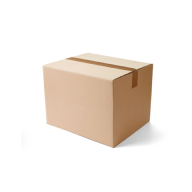Texpol Non-Sterile Fiber Pad 10x10 cm
4.3 / 5
Product description
Texpol 4-layer fibre dressings are soft and absorbent dressings that can be used for many healthcare procedures that do not require the use of sterile products. For example, they can be used to wipe the skin, absorb blood and other fluids, e.g. during wound dressing changes. General health care.
About Dry Swab
Dry Swabs are non-woven, absorbent pads designed for medical and sanitary applications. These lint-free, highly absorbent swabs are ideal for wound cleaning, fluid absorption, and applying antiseptics. Their sterile, disposable design makes them essential for healthcare settings where hygiene is critical.
- Medical Protection
Standards and labels
Standards have not been specified
Abena delivery terms
Free delivery when you order more than 150,00 € from Abena
Supplier shipping fee 4,74 €
Brand minimum 0,00 €
109,09 €
Price per 45 packages (4 500 pcs)
0,024 € / piece
Shipping fee is 4,74 € for orders under 150,00 €
A carton contains 45 packages (4 500 pieces)



